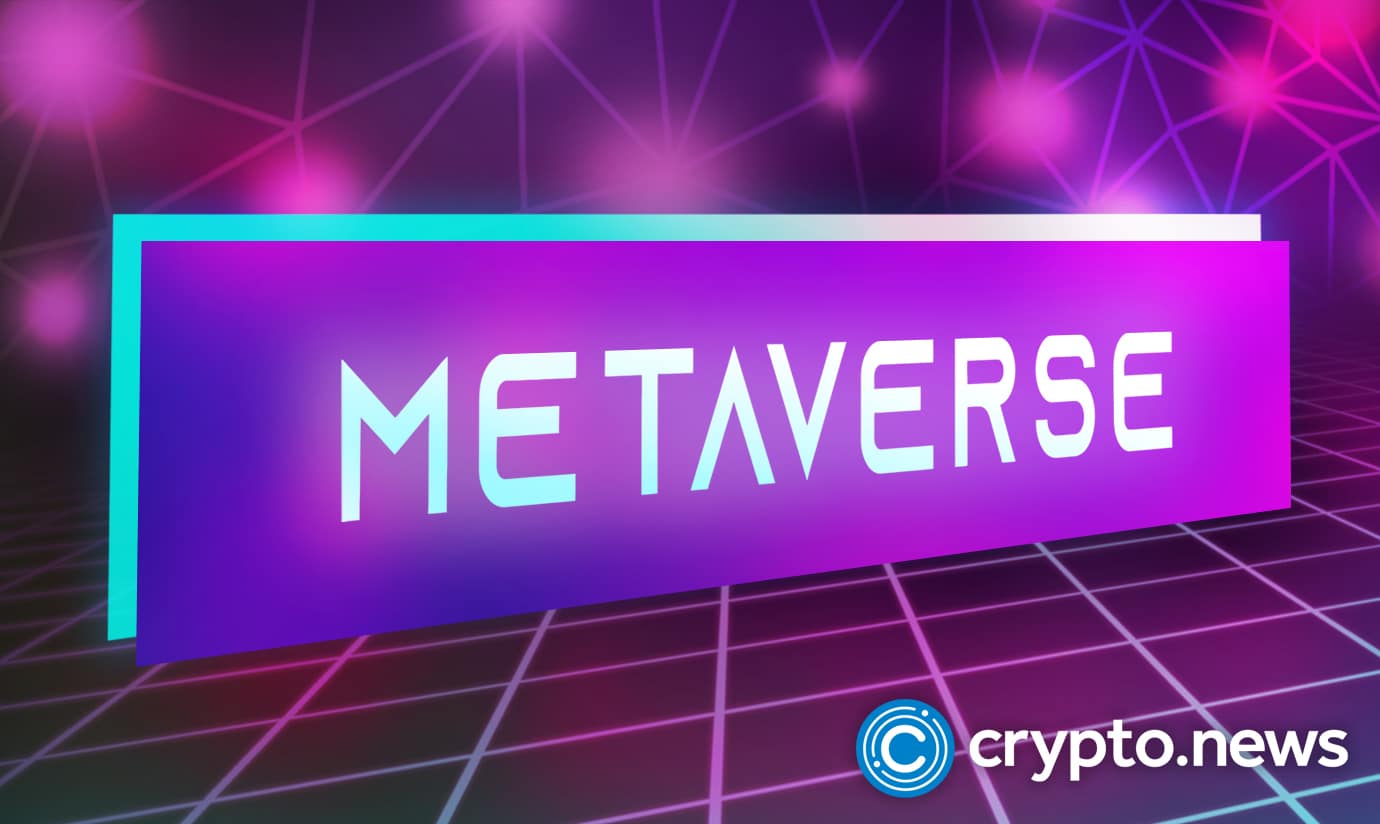What Is the Metaverse and Does It Matter?

The metaverse has had many descriptions, with the Oxford dictionary explaining it as “a virtual-reality space in which users can interact with a computer-generated environment and other users.” Other people and institutions have also described the term differently, with some believing that it’s just another buzzword. However, it has more to offer than that. As Meta says, the metaverse is a persistent virtual environment where everyone can exist synchronously.
As some greats like Elon Musk believe, the metaverse is too young to tell what it will surely bring; thus, it might need several years to realize its potential. The metaverse has existed as an idea for a long time. For instance, in 1992, Neal Stephenson detailed a virtual world where people would exist in digital form but under the control of underlying large institutions.
Stephenson describes such technology in his book Snow Crash. However, the idea is now further developed in line with the growth of blockchain technology that advocates for decentralization. Blockchain technology will be an underlying pillar in the metaverse to safeguard privacy, facilitate transactions, and enhance consensus in decision-making processes.
As Meta says, the metaverse will be vital in improving how people interact in activities like communication, transactions, and other day-to-day services. It will cancel the need for physical meetups to complete given businesses and activities introduced by Web 2.0. It will also encompass fun activities like blockchain gaming.
Currently, gaming metaverses have already started operating, with several of them attracting the attention of multinational companies. Such metaverse includes Sandbox, Fortnite, Axie Infinity, and Minecraft. Some of these metaverses also have crypto tokens for investors who do not want to play them. Some also have virtual estates where they sell rights to certain portions of their metaverses to people. These are just some of the extensive components of the metaverse.
If the term metaverse has been troubling you, worry no more; below is some information to guide you through this innovation and why it is worth keeping an eye on.
Will There Be One or Multiple Metaverses?
Whether there will be only one metaverse is only for the future to tell. However, such a possibility is low, given that most of the companies that plan on investing in the metaverse are coming up with their iterations. The early investors like Facebook, Sandbox, Decentraland, Sony, and Microsoft are all developing different metaverses.
The big question is whether the equipment used to enter one metaverse will be used to access another one. Also, it is not clear whether the available metaverses will have cross-overs or will exists as separate virtual universes. However, there might be hope for an intercross between the virtual world. Meta has pointed out that the interoperability of these innovations is crucial to promoting the inclusion of people.
The first investors of the metaverse are probably developing different projects as there are no uniform standards to govern their operation. Probably after some time with multiple metaverses going live, the parent companies will conspire to develop some critical components of the metaverse. That may even usher in other projects to make their projects interoperable.
What Is the Required Equipment to Access a Metaverse?
The equipment needed to enter the metaverse differs according to the platform one wants to enter. For example, Meta requires users to purchase Oculus Quest 2VR headsets for their metaverse. These headsets will cost a user about $300, even though they do not require extra hardware like PC or game consoles.
Other VR headset makers like HTC, SONY, HP, and Valve differ from Meta as they are connected to PCs or PlayStations 4 and 5. These are different types, and others may even roll out to support a connection to a mobile phone. Qualcomm is one company that is seeking to build AR glasses to operate with a mobile phone.
While all of the above equipment is needed to enter some metaverses, others do not require any headsets. However, the main difference is that AR/VR headsets offer a 360 degrees view of the metaverse while the ones used on PCs and COnsoles only do not. Roblox and Minecraft are such metaverses where people access them from their devices without the need for AR/VR headsets.
How Crypto and the Metaverse Fit.
People transact essentially using fiat currencies even though cryptos are still there in the physical world. As the metaverse is set to be a virtual world that will offer a life similar to the one on earth, every participant will be represented as an avatar. These avatars will lead lives like human beings and require services like feeding and others bought with money.
As that is the case, a question arises, how will people get that morning coffee? How about the tickets to a virtual concert? The use of cryptocurrencies will solve it. Even though other innovations like NFTs may be better for tickets, cryptos will be the primary means of exchange.
What Is the Connection Between Web 3 and the Metaverse?
The metaverse and Web 3 are two separate entities that are closely related in that the metaverse shall largely depend on Web 3. Web 3 is the incoming iteration of the internet that seeks to be decentralized to circle back the earnings to the user while capitalizing on digital assets and data privacy using blockchain technology.
Web 3 is highly intuited and intertwined with next-generation technology like AI, VR, and blockchain technology. If it becomes fully realized, it will offer the needed infrastructure for the advancement of the metaverse. However, both the metaverse and Web 3 are still in their first phases, making them the best opportunities to invest in but very risky.
What Is a Virtual Land?
In a metaverse, there is an estate where pieces of land are set aside to allow people to purchase them and own digital rights. These pieces of land have already been sold out by several metaverses, including Decentraland, Axie Infinity, and Sandbox.
Decentraland metaverse: Decentraland is a decentralized metaverse built on the Ethereum network to allow for tracking of real estate parcels that are defined by the LAND token. It leverages the Ether network to give digital ownership rights to virtual lands. It requires a user to hold MANA tokens (its governance tokens) for use in its ecosystem. In November 2021, Metaverse Group, an NFT based metaverse real estate company, purchased prime land in Decentraland worth $2.43 M.
Axie Infinity metaverse: This virtual world is an NFT-based online gaming platform developed by Vietnam-based company Sky Mavis. It runs on the Ethereum network too, and its players are tasked with collecting and minting NFTs that represent items known as Axies. It uses AXS as its native token for the users to access its features. This metaverse also sells virtual lands: last November, one of its land slots sold for 550ETH.
Sandbox metaverse: Sandbox metaverse is a video game developed by PIXOWL INC and released in 2012. It supports Microsoft Windows, Android, and iOS devices. Animoca Brands later acquired it in 2018. The game has a native token, SAND, that can even be traded on crypto exchanges. It is also virtual land that allows users to create their real estate.
Why Is Metaverse Real Estate Booming?
As the metaverse is gaining popularity, the young generation and celebrities are rushing to invest in all available opportunities. One of the most open opportunities is buying virtual land in the metaverse. Several institutions like Goldman Sachs and Fortune Magazine have labeled the innovation a multi-trillion-dollar opportunity.
Celebrities like Snoop Dogg have invested fortunes in the metaverse virtual real estate. Their investment is not pointless as most of the virtual lands in several metaverses record their highest prices. It is becoming believable that coming generations will be more focused on owning lands in the metaverse than real life. However, a lot still has to be done to realize that dream.
Critics say virtual estates are just but other meaningless projects as they rely heavily on hype and speculation. Others challenge that these lands do not qualify to be real estate. Some explain that there are certain qualities that any real estate has to satisfy to strike security and confidence among its buyers and sellers.
Anyone can expect that the metaverse will face criticism and rejection from the traditional real estate project. The metaverse is still young, and any project in it may be a big hit or miss necessitating proper study before risking funds through investment.
NFTs in the Metaverse – How Do They Relate?
NFTs are projected to be one of the most successful innovations of our generation. These assets have evolved from being just digital art. They are gaining real-life use cases almost every day. They have already stirred almost every available and upcoming innovation. They are in the blockchain gaming, crypto space, and they have already started creeping into the metaverse.
Last week, Yuga labs and Animoca Brands teased their metaverse project. In the video footage, a BAYC ape teleports to a world of other apes like him. The in-development metaverse project also encompasses NFTs from other companies like WoW and MAYC.
Away from NFT metaverses, NFTs are also available in the normal metaverse. Some gaming metaverses use NFTs as tokens to pay their players in the P2E systems. Others even have showrooms where people can buy art from the virtual galleries as NFTs. These innovations show that the metaverse and NFTs are two next-generation technologies meant to grow progressively and jointly.
How Is Blockchain Gaming Tied to the Metaverse?
Blockchain gaming is one of the recent trends in the crypto space. It is gaining popularity as users are offered the chance to earn in real life. It also has a large customer base of around 1B people. Due to that reason, blockchain innovators are seeking to tap it as a resource to drive their projects to adoption.
NFT makers have already explored it. Some developers set NFTs as collectibles in the game or lucky gems for the players. Now, blockchain gaming has advanced to touch the metaverse. Several online games are complete metaverses of their own. Games like The Sandbox, Fortnite, and Minecraft are complete metaverses. Other metaverses are introducing blockchain gaming in their lounges.
Traditional gaming companies are also doing projects to enter the metaverse. Since blockchain gaming seems to be going hand in hand with the metaverse, it could be rewarding to invest in stocks of gaming companies and their crypto tokens. However, it should be done after deep research since such investments are risky and prone to collapse.
What Companies Should Focus On While Developing a Metaverse
Even though the available technology is not enough to build a fully functional metaverse, it is promising enough as some are already developed to desirable levels. Like the internet, its operation will be supported by multiple underlying technologies. These technologies will need to support the already developed environments, programmed activities and give room for updates and innovations, not forgetting interoperability with other metaverses.
To achieve such technological advancement, parent companies will need to overcome limitations like Network issues, hardware capabilities, and interoperability.
Network Limitations
As the metaverse is projected to be highly graphical, it will need high-speed data transfer and efficiency. Therefore, the innovators need to develop new solutions to improve data transfer speed in their systems. Even though issues like latency are experiencing considerable improvements, most of the related companies are yet to solve them.
Hardware Capability
Hardware is the most important part of a computer system since for excellent software like the metaverse to run seamlessly, it would depend on the support of the host hardware. This is the main limitation behind creating a metaverse, as it’s expensive and hard to design next-generation hardware systems.
However, current developments in AR/VR hardware are encouraging. This equipment will be necessary as it’s the only way to enter a metaverse and visualize it in mind as a 3D environment. However, the current AR/VR hardware is still not comfortable enough to support an extended stay in the metaverse.
Parent companies need to improve the functionality of such hardware to reduce their costs and increase their efficiency and quality to enhance the user experience. Analysts suggest that it may take around five to ten years to develop high-quality AR/VR hardware that will be cheap enough to allow for mass adoption of the metaverse.
Interoperability
Interoperability is a central issue in the crypto space. Many people wonder how to best swap their crypto holdings from one network to another. However, some innovative solutions are coming up to address the issue of introducing cross-chain bridges.
These bridges are vulnerable as it’s difficult to seal all loopholes from intuitive hackers, which has led to the loss of fortunes in funds from the crypto space. Now, parent companies that focus on the metaverse have to develop intelligent ways of allowing avatars to access different metaverses by introducing interoperability.
Major Ecosystem Players in a Typical Metaverse
The major players in the metaverse ecosystems can be broken down into three categories: Hardware components, infrastructure, and content.
Hardware
As discussed earlier, hardware must be highly intuited to support the functionality of the software and its components. Some of the available technology include Google’s project Starline, which is working on making virtual discussions feel as natural as possible. Oculus has also improved its virtual reality headgear to give it a better image definition.
Infrastructure
Some of the basic infrastructural needs in a typical metaverse include network service providers, programming solutions, and the virtual world.
- Network service providers
Internet connections for the metaverses need to be very strong and reliable to allow the systems to run intuitively and at their best levels. An example of such technological advancement is SpaceX’s Starlink technology. It offers a superfast internet connection even to the most remote places in the universe.
- Programming solutions
Programming solutions providers are vital in developing the metaverse as these virtual worlds will be softwares. NVIDIA, one of the well-known software solutions companies primarily by their high-quality graphics chip, can be such a candidate. They offer some of the best gaming hardware and software solutions and are also developing a metaverse. Such players are essential in enhancing real-world physics in the metaverse.
- Virtual worlds
The other most crucial component of the infrastructural part of the metaverse is a virtual world. This is the leading software that has a design of a 3D environment where all other visuals can be seen after development—currently, both centralized (governed by parent companies) and decentralized (controlled by stakeholders) metaverses.
Real-life examples of centralized virtual worlds are Fortnite and Roblox. An example of a decentralized virtual world is Decentraland.
Content
Some important contents of a metaverse include Avatars, digital assets and their marketplaces, virtual projections of social activities like gaming, and social events.
Digital assets and marketplaces
As the metaverse is a part of the crypto space, there is a need for a virtual marketplace for the assets. Here assets like Art and NFTs can be auctioned, and all transactions completed using blockchain technology and crypto-assets.
Avatars
Avatars are among the most exciting parts of the metaverse as people have to choose one to tour the virtual world. While some people lead unsatisfied lives in the physical world, some metaverses like Genies allow people to fully customize their avatars how they see fit. These avatars then take your identity and represent you in the virtual world.
Virtual Projections of Social Events and Activities
To qualify as a world, metaverses have to involve social activities as humans can never live without socialization. Such activities include events and normal day-to-day activities like interacting and running economies. Strive is one company working on technology to enhance such activities and has clients like Verizon and Walmart waiting to implement their solutions in their metaverses.
The Metaverse and the Media- How Will They Pair?
Media and content creation are some of the main targets of Web 3. The metaverse will also rely on the media for communication, which begs the question, what is the media’s role in improving innovation? Some stakeholders like Mark Zuckerberg have stressed that communication is vital in the metaverse, and the innovation seeks to improve it vastly.
Final Word
During the initial launch of the internet in the late 1990s, critics dismissed it as a hoax and a fiction that would never come to pass. As greats like Jeff Bezos were preparing to take advantage of e-Commerce, they were dismissed that such business models would fail terribly. Now, Bezos is among the richest men in the world, having held the record of the richest person for years.
The metaverse is also in a similar state as Web 1.0 was in the 1990s. It is young and in the initial phases without a guarantee that it will work and break records. However, some metaverses are already working and making profits, like Sandbox, Decentraland, Roblox, and Fortnite.
The chances offered by the metaverse are extensive, and it comes at an opportune time when Web 3 is in its initial phases too. The main question is if the metaverse is worth the risk. From a logical point of view, the metaverse is a workable solution to many problems in the physical world. It also offers extensive chances to improve human interactions and introduce decentralization in almost every sector of human interaction.
If an investor can combine the metaverse, crypto space, and Web 3 intuitively in a business setup, they may amass fortunes soon. However, nothing is guaranteed about the three innovations, but they are watching in 2022 and beyond.















